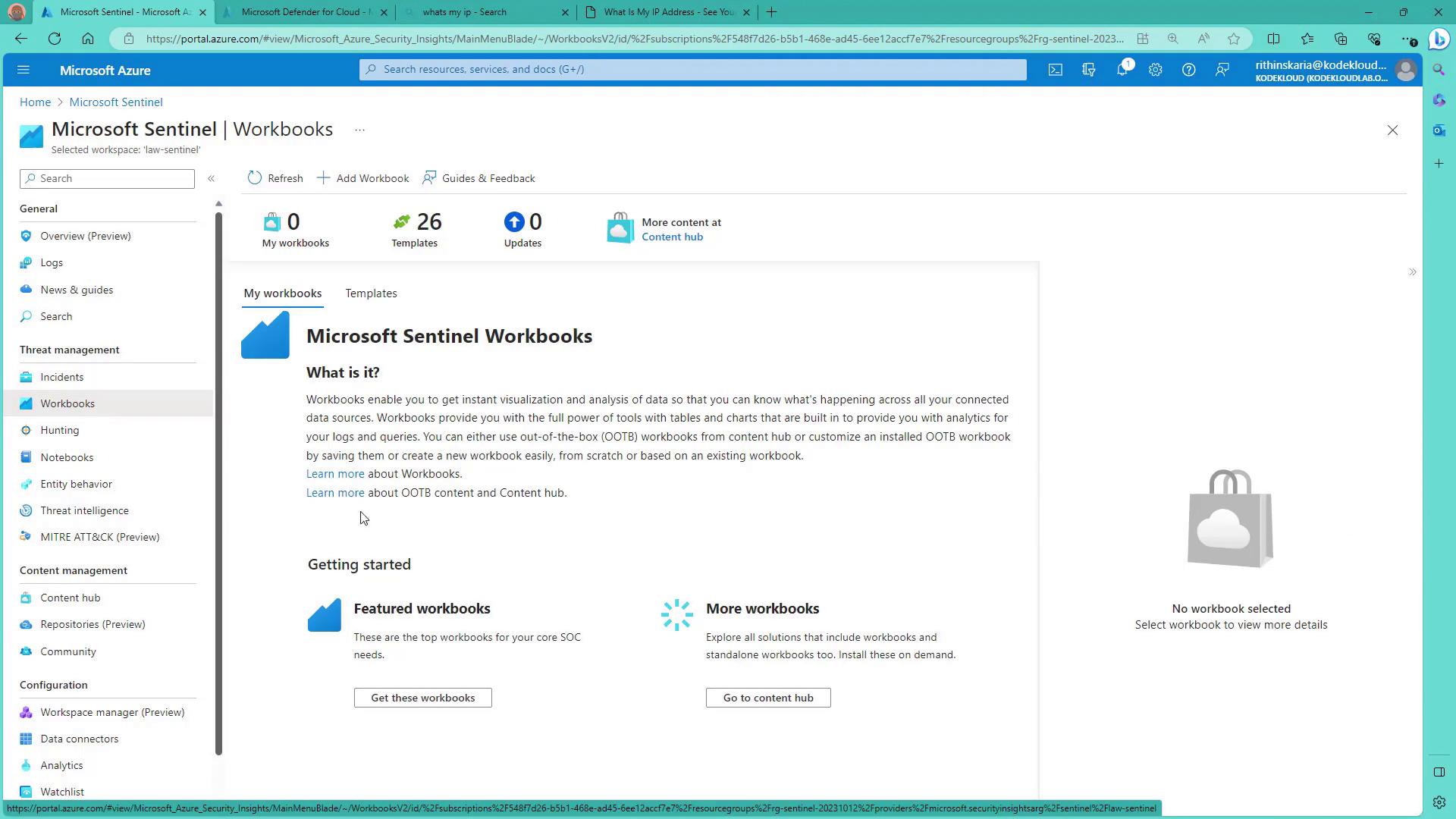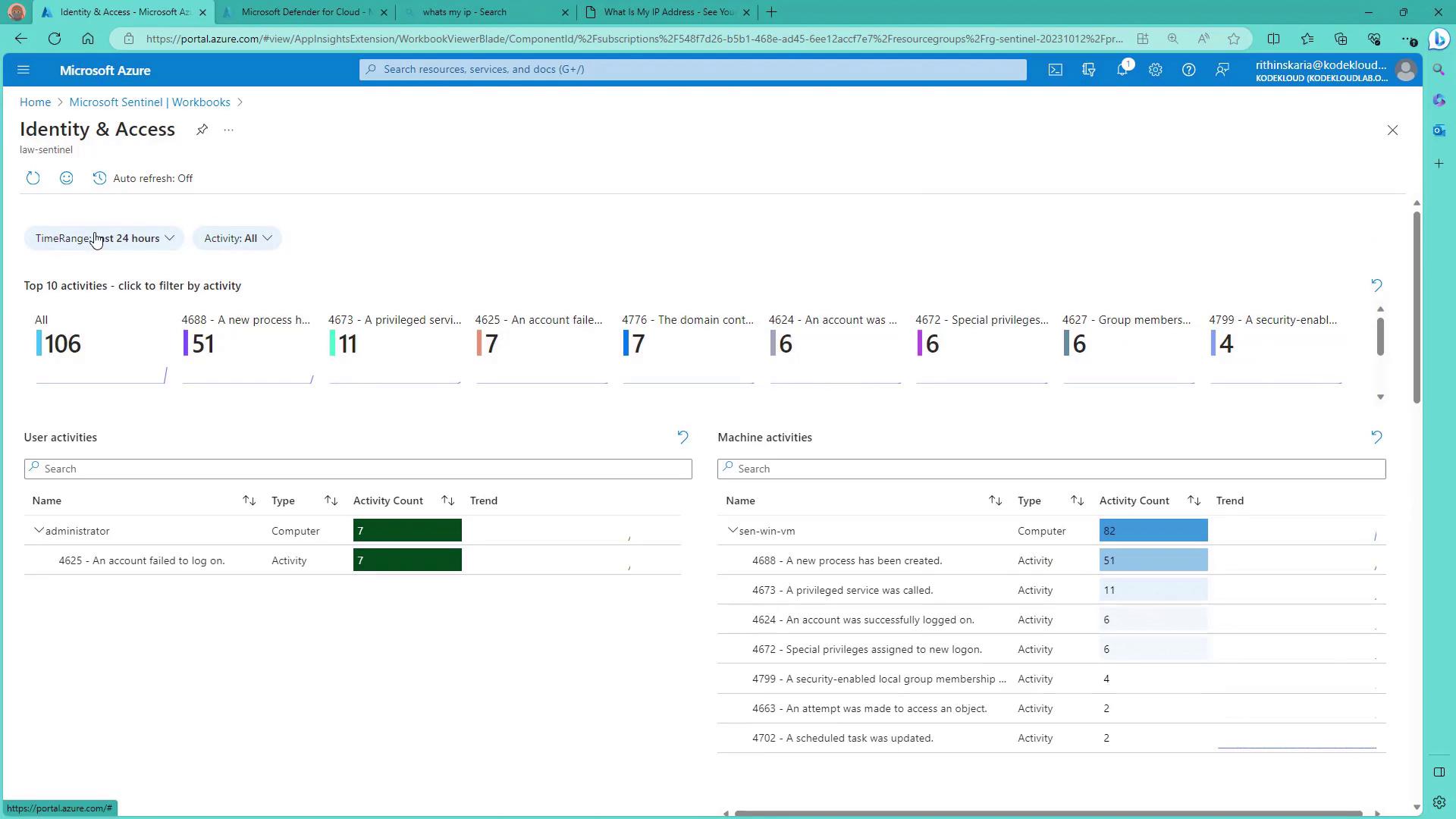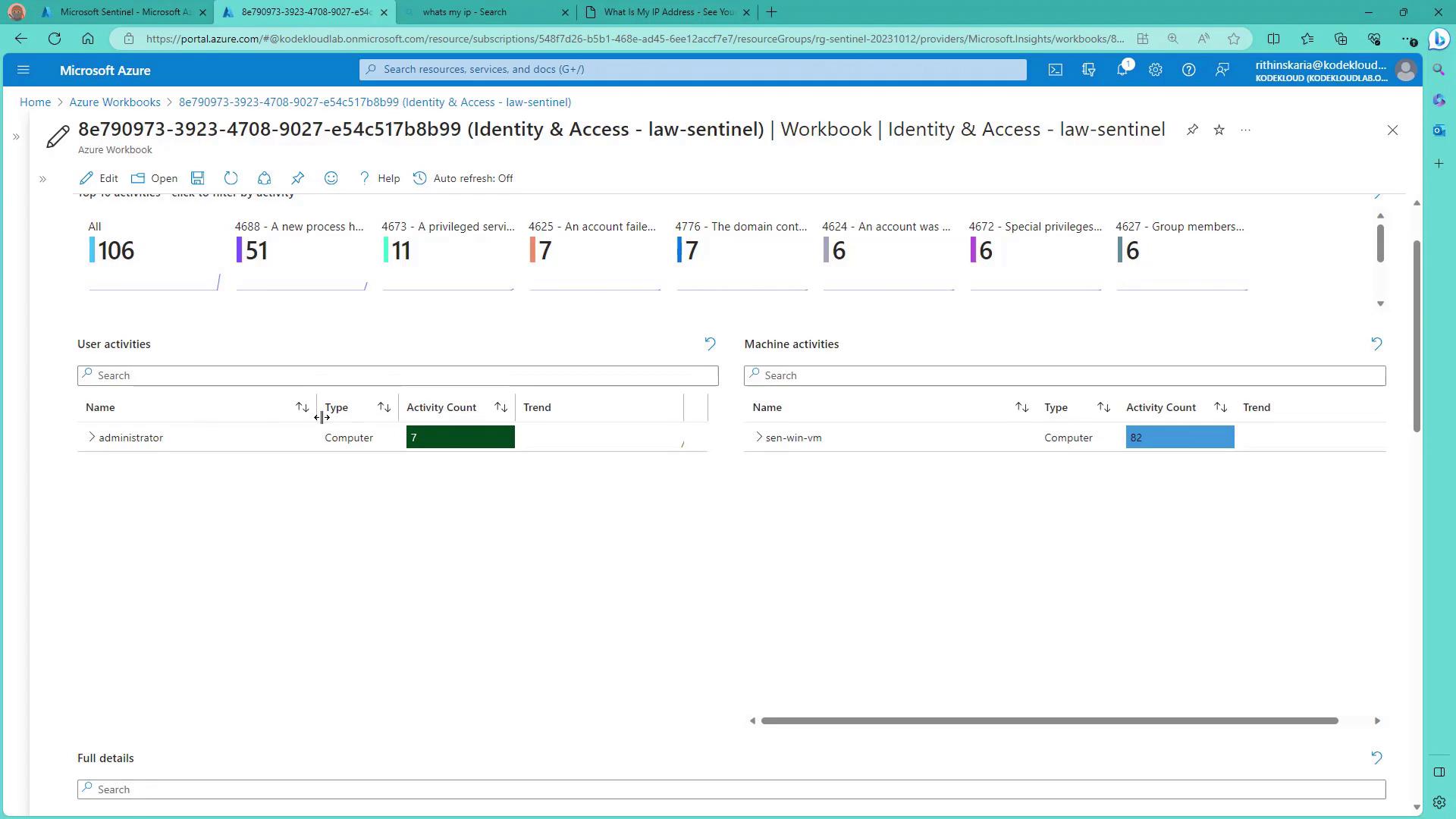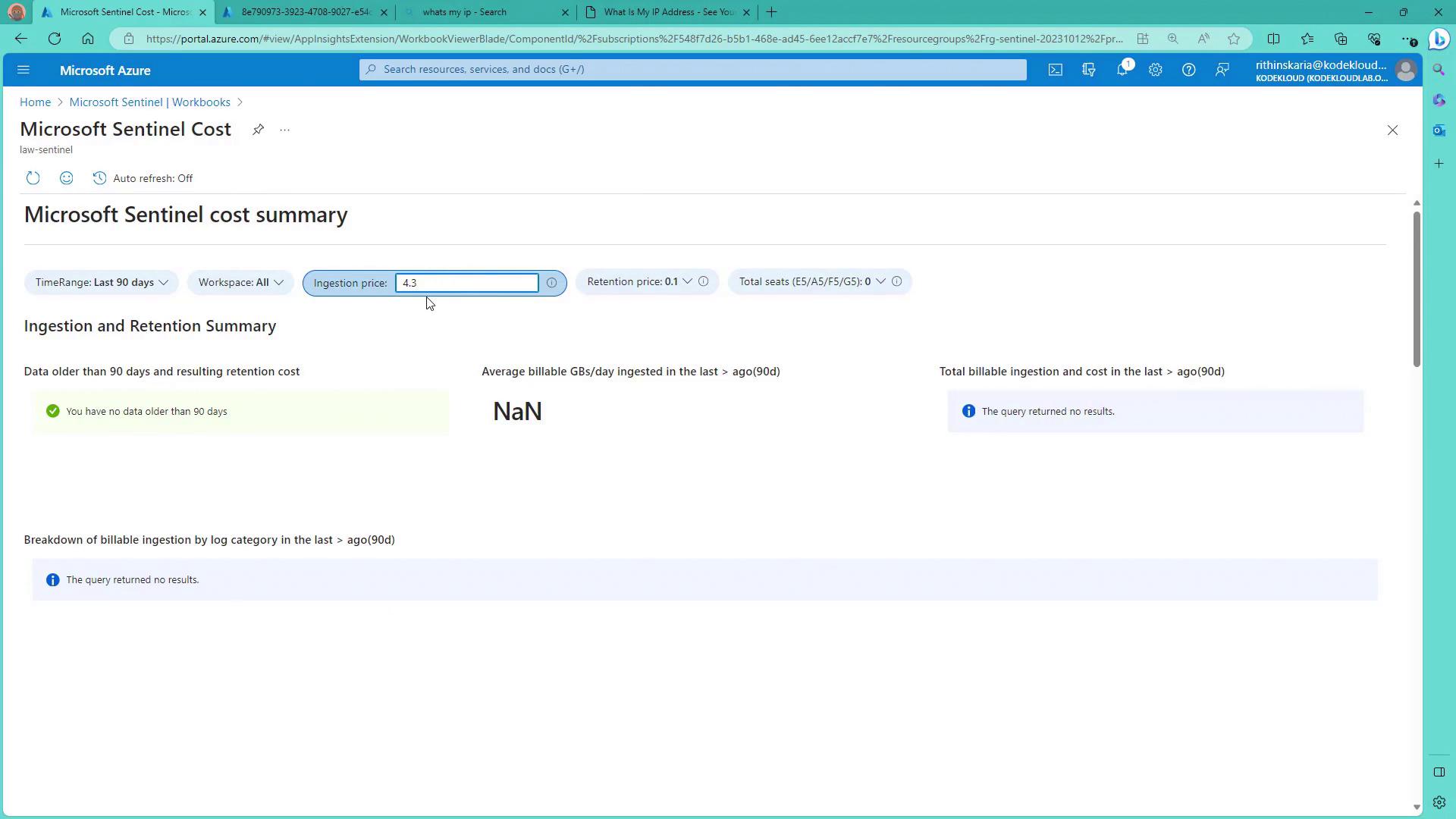Microsoft Azure Security Technologies (AZ-500)
Microsoft Sentinel
Create workbooks for explore Sentinel data
In the previous lesson, we brought in data from various connectors. Now that the data is ingested into your workspace, the next step is to visualize and analyze it effectively.
Workbooks in Azure Sentinel are dynamic, interactive canvases that transform raw data into actionable insights. They help you spot trends, identify vulnerabilities, and understand user behavior through a powerful visual narrative.
Harnessing the Power of Workbooks in Microsoft Sentinel
The process is simple. Start by selecting one of the many templates tailored for common scenarios based on your configured connectors. These templates serve as an effective starting point, and you can further customize them by adding visualizations, modifying queries, or integrating additional data sources.
Follow these steps to view workbooks in the Azure portal:
- Open the Azure portal and navigate to your Sentinel workspace.
- Go to the Workbooks section to discover a variety of available templates.

If the sidebar or additional sections are not visible in your browser, simply refresh the page.
Even when a large volume of data is not immediately visible, key areas such as identity and access events within Windows Security data often stand out. Clicking on a template reveals detailed information about various activities, such as:
- A "4688" event indicating a new process creation.
- A privileged service being called.
- An account failing to log on.
Unauthorized Access Alert
These events may indicate unauthorized access attempts, especially if the machine is exposed to a public IP address. Investigate any unexpected behavior immediately.
Expanding the view provides a detailed breakdown including counts, timestamps, and status details for events processed by services like Conhost.

The "more details" option offers comprehensive insights without the need to manually write KQL queries since the data is provided out-of-the-box.
Saving and Accessing Custom Workbooks
If you discover a workbook template that meets your requirements, save it for quick future access. Once saved, refresh the Workbooks section in Azure Sentinel to locate your custom workbook.

You can expand the workbook to a larger canvas, utilize search boxes, and filter the data—for example, to view all user sign-in activities on a server.

Exploring Additional Templates
Advanced workbooks are available for other scenarios as well. These include analyzing analytics efficiency or monitoring logs from Active Directory and Azure Active Directory. Sometimes, the returned query might show no results if no activity has been logged yet; this is perfectly normal.
There are also templates for monitoring services like Defender for Identity, Defender for Endpoint, and Sentinel cost analysis. If you experience issues with missing panels in a template, a browser refresh usually resolves the problem.
To view Sentinel cost details:
- Select the appropriate template (Sentinel cost).
- Review the ingestion price and retention details provided within the template.

Data Onboarding Reminder
Initially, you may not see any data if the onboarding process has just begun. As more data accumulates, the workbook will accurately reflect usage patterns and associated costs.
By leveraging workbooks in Azure Sentinel, you can transform your raw data into valuable insights without needing to write custom queries. Enjoy the ease of streamlined data visualization and proactive analysis in your security environment.
Additional Resources
Watch Video
Watch video content